1. AlUla and Hegra (Mada'in Salih)
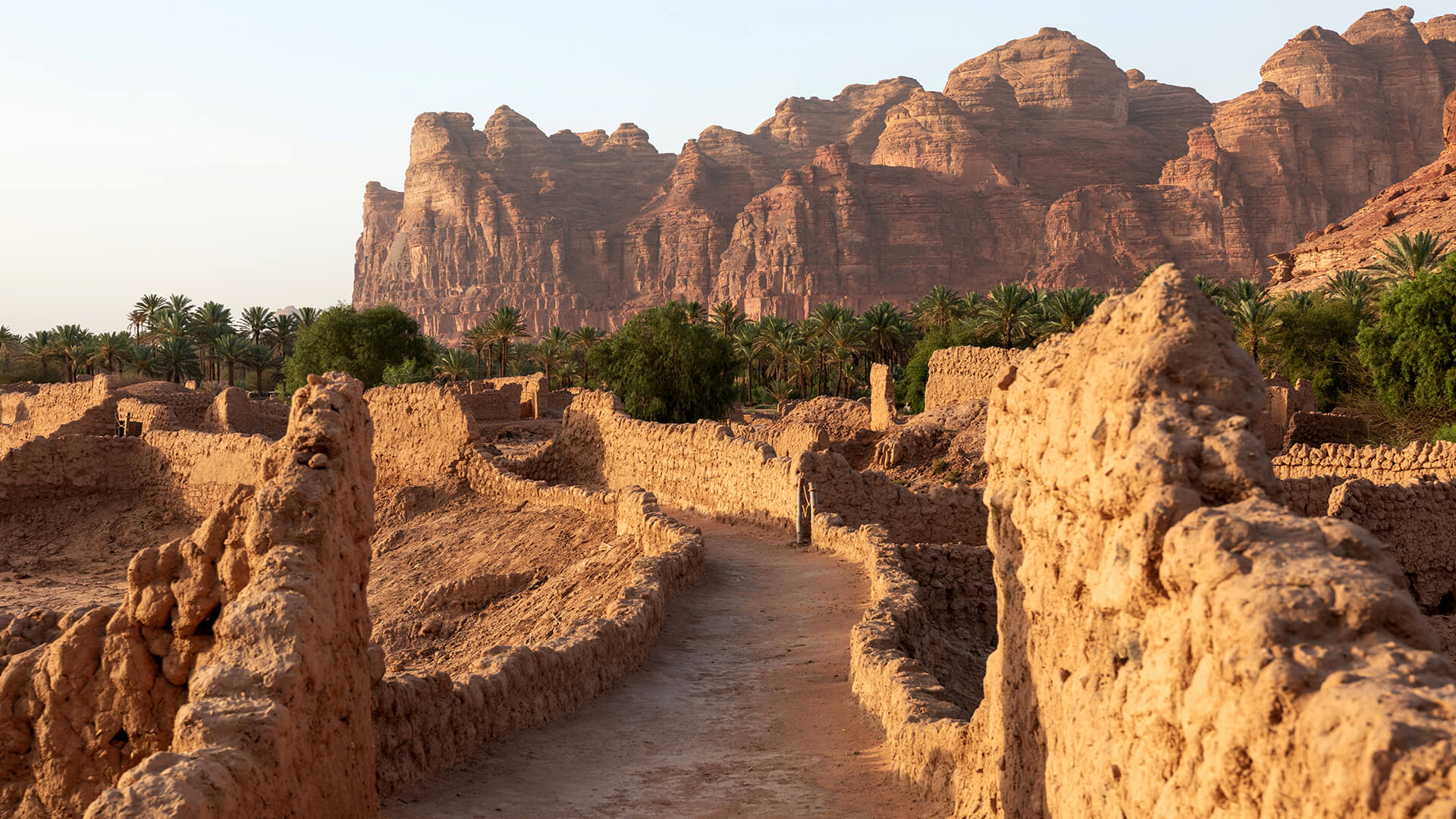
AlUla, a vast desert landscape in northwestern Saudi Arabia, holds the ancient city of Hegra, also known as Mada'in Salih. It was a major trading hub and is famous for its remarkably well-preserved Nabataean tombs carved into sandstone cliffs. Explore the stunning rock formations and delve into the history of this fascinating site.
A Cultural and Trade Crossroads
With over 7,000 years of human history, AlUla has been a cultural and trade crossroads, home to a succession of civilizations that have left their mark. Positioned strategically on the ancient Incense Route, connecting southern Arabia with the Mediterranean, Egypt, and Mesopotamia, AlUla played a pivotal role in trade, religion, and cultural exchange.
The Nabatean Kingdom and Hegra
The crown jewel of AlUla is Hegra, also known as Mada’in Salih, a UNESCO World Heritage Site. Hegra was a thriving city of the Nabatean Kingdom, known for their capital at Petra. They established Hegra as a vital trading city, controlling trade routes for spices, incense, and textiles.
Hegra is home to over 100 monumental rock-cut tombs, carved into sandstone cliffs. These tombs, dating back to the first century CE, feature intricate facades and inscriptions, testifying to the Nabatean’s architectural skill and adaptation to the environment. The tombs offer insight into Nabatean burial practices and religious beliefs.
A Meeting Point for Civilizations
AlUla’s history extends far beyond the Nabateans. Archaeological evidence points to settlements as early as the Bronze Age. The Dedanites and Lihyanites occupied the region before the Nabataeans, leaving behind cultural and religious artifacts. Later, the Roman Empire influenced the region, further solidifying AlUla’s place as a crossroads.
AlUla is rich in archaeological sites beyond Hegra. Jabal Ikmah, an “open-air library,” features thousands of inscriptions in various ancient languages. These inscriptions offer invaluable insights into the social, political, and religious life of the peoples who lived in and passed through the area. AlUla also contains remnants of ancient water management systems.
While known for its pre-Islamic history, AlUla also played an important role during the early Islamic period, serving as a key stop for pilgrims traveling to Mecca and Medina.
AlUla Today
The Saudi government has invested heavily in preserving and promoting AlUla’s historical sites through the AlUla Vision initiative. The region is being transformed into a global cultural and heritage destination.
Must-See Historical Experiences
- Hegra: Explore the rock-cut tombs and learn about the city’s role in the Incense Route.
- Jabal Ikmah: Study the thousands of ancient inscriptions.
- Dedan: Visit the site of this ancient kingdom and explore its ruins and statues.
Geographic note: The Prince Abdul Majeed bin Abdulaziz Domestic Airport is a 30-minute drive from AlUla, with regular flights from major hubs such as Jeddah and Riyadh.
2.Tayma
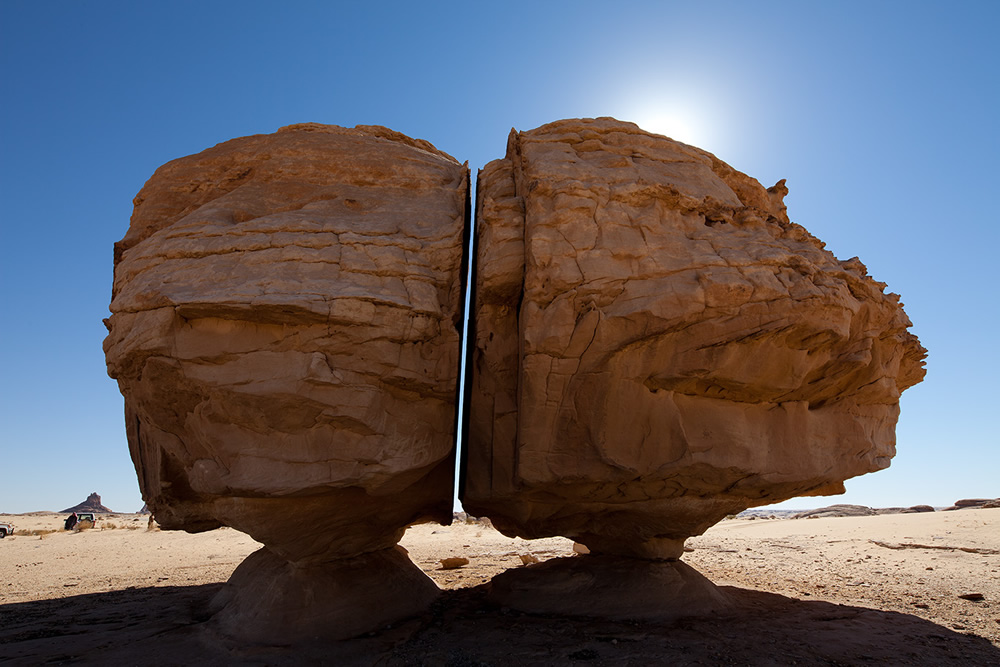
A site of great antiquity, Tayma is among the oldest inhabited oases in Saudi Arabia, boasting a history that reaches back to the Bronze Age. It holds the second spot on our list of top 10 historical destinations and is located about 260 kilometers southeast of Tabuk and 400 kilometers from Medina.
Tayma, a crucial stop on ancient caravan routes linking Arabia to the Mediterranean and Mesopotamia, is renowned for its impressive ancient walls and rich archaeological heritage. This important site has connections to various ancient civilizations, including the Babylonians and Egyptians, making it a key destination for archaeological research. Among Tayma's most significant discoveries is the Tayma Stone, now displayed in the Louvre Museum. This artifact bears one of the oldest Aramaic inscriptions, underscoring the town's historical importance as a crossroads of cultures and languages. Today, visitors can explore the remnants of Tayma's ancient walls, wells, and palaces, offering a fascinating glimpse into the vibrant history of this desert oasis.
Geographic note
Tayma is accessible by road from Tabuk. The closest airport is Prince Sultan Bin Abdulaziz Airport, also located in Tabuk.
Must-see experiences
A visit to the Tayma Museum is highly recommended, along with exploring the Bir Haddaj well and walking along the ancient walls that once protected this historic oasis.
3. Diriyah – the birthplace of Saudi Arabia

Just 20 kilometers northwest of Riyadh lies Diriyah, a historical site often called the "cradle of the Kingdom." Originally a small 15th-century oasis settlement along Wadi Hanifah, Diriyah's importance grew significantly in the 18th century when it became the capital of the First Saudi State.
Diriyah is historically significant as the birthplace of the House of Saud and the Islamic reform movement that shaped modern Saudi Arabia.
The rise of the First Saudi State
In the mid-18th century, the alliance between Imam Muhammad bin Saud, founder of the First Saudi State, and religious reformer Muhammad ibn Abd al-Wahhab transformed Diriyah into the political and religious heart of the burgeoning Saudi power. The House of Saud, seeking to unify the Arabian Peninsula under their rule and Wahhabism, made Diriyah a hub of politics, religion, and commerce. Diriyah became a symbol of Saudi heritage and identity, with its At-Turaif District at the center of early Saudi leadership's political and military activities.
At-Turaif district: a UNESCO World Heritage Site
The At-Turaif District, Diriyah's royal quarter, is a UNESCO World Heritage Site (2010) recognized for its cultural and historical significance. It exemplifies traditional Najdi architecture, featuring mud-brick palaces, fortresses, and mosques distinguished by thick walls, minimal windows, and geometric patterns.
The fall of Diriyah and its restoration
Diriyah's rise ended abruptly in 1818 when Ottoman forces destroyed it after a prolonged conflict. Its role as capital shifted to Riyadh, which later became the capital of modern Saudi Arabia. Recently, Diriyah has undergone extensive restoration, particularly the At-Turaif District, now a UNESCO World Heritage Site. This effort showcases traditional Najdi architecture and offers visitors interactive exhibits, museum spaces, and live performances, including the Diriyah Museum, which details the region's history and the birth of the Saudi state.
Key highlights of Diriyah
- At-Turaif District: The historic heart of Diriyah, with mud-brick palaces and mosques reflecting traditional Najdi architecture.
- Salwa Palace: The residence of the first Saudi royal family, now a key site for understanding the early state.
- Diriyah Museum: A cultural institution offering insights into the history of the region and the formation of the Saudi state.
Diriyah is conveniently located just a short drive from Riyadh and is easily accessible from the city’s main attractions.
4. Ushaiqer Heritage Village
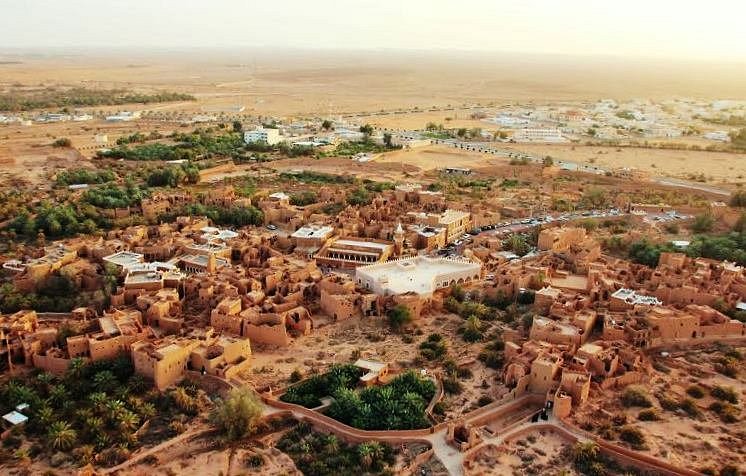
Ushaiqer Heritage Village is located approximately 200 kilometres northwest of Riyadh, in the heart of Najd.
A visit to Ushaiqer provides opportunities to explore the region's rich heritage. Visitors can tour the Al-Sudairy Heritage House, a beautifully restored mansion that showcases traditional Najdi architectural styles. Ancient mosques, such as Al-Qassar Mosque, offer further glimpses into the past. For a hands-on experience, visitors can participate in local cultural activities like traditional bread-making or handicrafts workshops.
Geographic Note
Ushaiqer Heritage Village is easily accessible by road from Riyadh, making it an ideal destination for a day trip. It lies near the Shaqra area, a region also known for its historical significance.
Must-See Experiences
Visitors can tour the Al-Sudairy Heritage House, an impeccably restored mansion that showcases traditional Najdi architecture, visit ancient mosques such as Al-Qassar Mosque, and take part in local cultural activities like traditional bread-making or handicrafts workshops.
5. Masmak Fortress: A Symbol of Saudi Unification
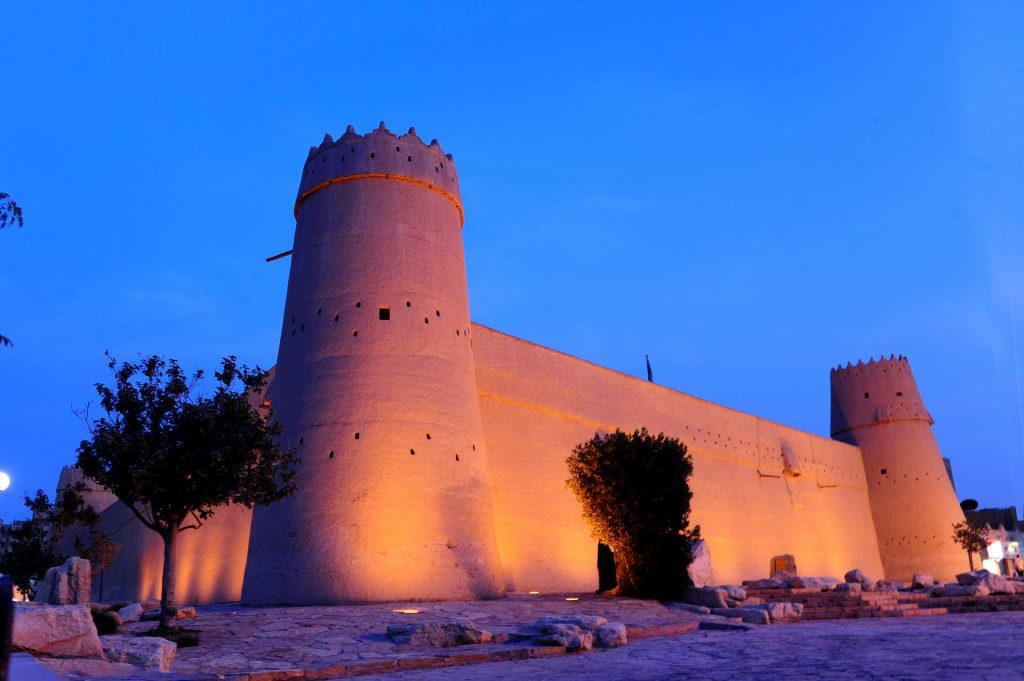
Located in central Riyadh, the Masmak Fortress is a historically significant Saudi landmark. Built in the mid-19th century, this mud-brick and clay fortress exemplifies traditional Najdi architecture, providing natural insulation from the desert climate. Its thick walls and four watchtowers served as a stronghold during the region's turbulent 19th and early 20th centuries.
The role of Masmak in Saudi unification
The Masmak Fortress's historical importance was solidified in 1902 when King Abdulaziz Al Saud captured it from the Rashidi forces, a pivotal event in the unification of Saudi Arabia. This victory symbolized his determination and strategic brilliance, leading to the Kingdom's formation in 1932. The fortress itself exemplifies Najdi fort architecture, with mud-brick walls, reinforced gates, four watchtowers, a courtyard, and various rooms, including the Diwan. The original wooden door still bears a spearhead from the 1902 battle.
The Masmak Museum
Recently restored and transformed into a museum, Masmak Fortress now allows visitors to explore its historical significance. The museum houses artifacts, photographs, maps, and displays chronicling the Kingdom's unification, including traditional weaponry and documents from the early 20th century. Multimedia exhibits offer interactive narratives of Riyadh's transformation into the nation's capital.
Geographic note
Masmak Fortress is situated in Riyadh’s old quarter, known as Al-Batha, and is just a few kilometres from the city’s main commercial districts. Its central location makes it easily accessible for visitors, and it is often included as part of historical and cultural tours of Riyadh.
Must-see experiences:
- Exploring the fortress: Wander through the historic rooms, the courtyard, and the watchtowers that once served as defensive points.
- Museum Exhibits: View artifacts from the unification period, including traditional weaponry and photographs of King Abdulaziz’s early campaigns.
- Cultural Displays: Learn about Nadji architecture, traditional Saudi clothing, and the customs of the early 20th century
- Interactive Installations: Engage with multimedia exhibits that recount the dramatic raid led by King Abdulaziz and the eventual rise of the Saudi state.
6. Jeddah Historical District (Al-Balad)
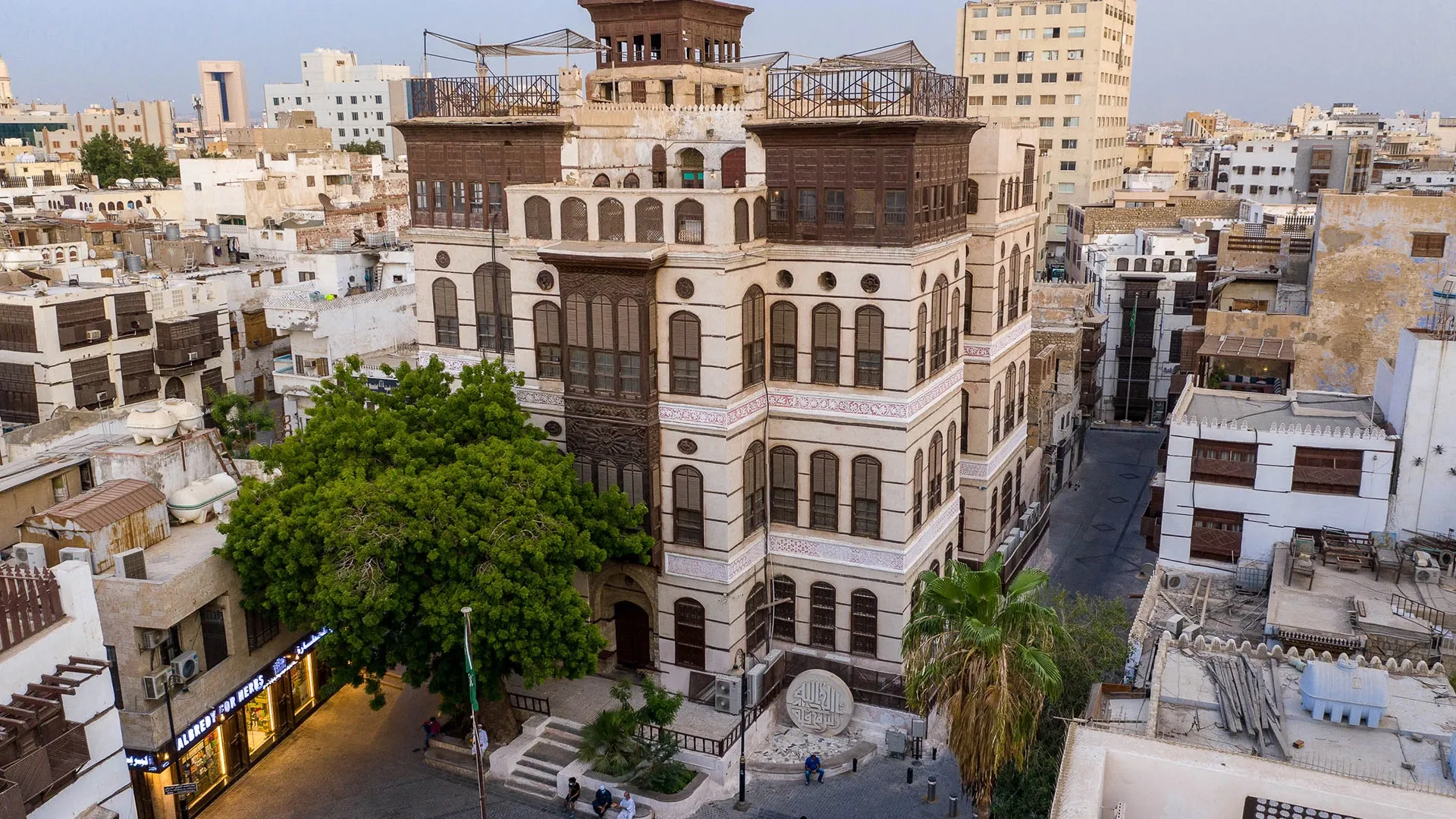
Al-Balad, a UNESCO World Heritage Site in Jeddah, is a historical district dating back to the 7th century. As a major commercial hub and gateway for Mecca-bound pilgrims, it has evolved into a vibrant urban area while preserving its original architecture and charm.
Key features of Al Balad:
Al-Balad's traditional Hijazi architecture is characterized by coral-stone houses with intricately carved wooden balconies (rawasheen). These centuries-old structures were designed for the region's hot climate, using materials that promote ventilation and cooling.
Notable landmarks:
- Naseef House: Perhaps the most famous of Al Balad’s buildings, Naseef House was once the residence of a powerful merchant family. Built in the 19th century, it is notable for its grand size and the winding staircase designed to allow camels to deliver goods to the upper floors. The house is now a museum that provides a glimpse into Jeddah’s rich history and culture.
- Al Shafei Mosque: Al Shafei Mosque is one of the oldest mosques in Jeddah, dating back to the 7th century. It has undergone several renovations over the years, but it remains a prominent religious landmark in Al Balad.
- Bab Makkah: This iconic gate once marked the beginning of the pilgrimage route to Mecca and remains a significant symbol of the district’s role in serving pilgrims.
Experiences for visitors
- Walking tours: Visitors can take guided walking tours through Al Balad’s narrow alleyways, exploring its ancient homes, mosques, and markets while learning about the district’s history and the families who lived there.
- Cultural festivals: Al Balad hosts several cultural festivals throughout the year, showcasing traditional music, dance, and food, offering a unique opportunity to experience Jeddah’s cultural heritage.
UNESCO Recognition:
Al Balad was recognised by UNESCO for its unique combination of urban heritage and traditional architectural styles, which reflect the historical role Jeddah played as a major Red Sea port and a gateway for pilgrims. The listing also highlights the area’s well-preserved coral-stone houses and its importance in the development of the Hijazi culture.
7. Najran: ancient crossroads of trade and history
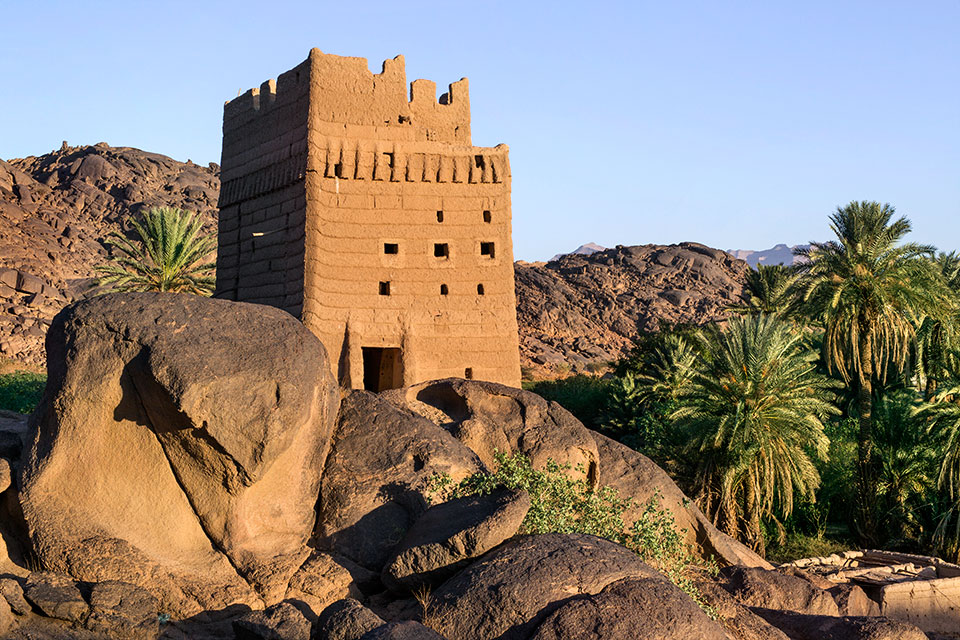
Najran, in southern Saudi Arabia, was a key stop on ancient incense and spice trade routes connecting Arabia to the Mediterranean and Mesopotamia. Its strategic location fostered commerce, culture, and intercultural exchange.
Bi’r Hima: a UNESCO World Heritage site:
Approximately 30 kilometers northeast of Najran lies Bi'r Hima, a UNESCO World Heritage Site famed for both its historically important wells and its rich collection of ancient rock art. These wells were crucial for life and trade in this arid region, while the petroglyphs, some thousands of years old, provide a vivid record of the lives, beliefs, and interactions with the environment of the successive populations that inhabited or traversed this crossroads of wadis and jebels.
Experiences for visitors
- Bi’r Hima Petroglyphs: Explore the ancient rock carvings that depict battle scenes, animals, and religious figures, providing insight into the martial and spiritual life of ancient Arabia.
- Al-Ukhdood Archaeological Site: Walk among the ruins of an ancient city that was once a key centre of trade and culture in the region, and view the artefacts that tell the story of its people.
- Mud-Brick Architecture: Visit the Old Town of Najran, where traditional fortresses and houses have been preserved, showcasing the ancient building techniques that have withstood the test of time.
Geographic note:
Najran is easily accessible via the Najran Domestic Airport, with regular flights connecting the region to major cities such as Riyadh and Jeddah. Its location near the Yemeni border also highlights its role as a cultural and commercial crossroads, reflecting the region’s history of interaction with neighbouring civilisations.
8. Qaryat al-Faw (Empty Quarter)
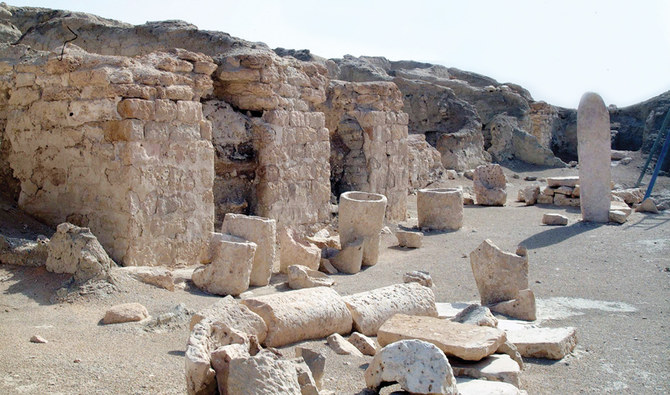
Qaryat al-Faw, a UNESCO World Heritage Site near Wadi ad-Dawasir on the southern edge of the Rub' al Khali desert, is often called the "Atlantis of the Sands." It is the eighth such site in Saudi Arabia to receive this designation.
Preservation:
Despite its abandonment in the 5th century, the archaeological remains have been well-preserved due to the harsh desert environment. The site is protected under Saudi law, with management efforts coordinated between cultural and wildlife conservation agencies. This historical site serves as a valuable record of ancient human interaction with the environment and other civilisations through trade, religion, and military activities.
Must-See Experiences
Explore the sophisticated irrigation systems, the ancient ruins, and the artefacts that reveal the daily life of this once-thriving desert city.
Geographic note:
The Al-Faw Archaeological Area is located in southern Saudi Arabia, near the southern edge of the Riyadh Region, close to the border with the Najran Region. Its location at the intersection of the Rub’ al Khali (Empty Quarter) desert and the Tuwaiq escarpment places it geographically within the southern part of the Kingdom. Although administratively it falls within the Riyadh Region, it is closer to the southern part of the country due to its proximity to the Najran area and the Empty Quarter desert.
9. Hail region: a window into prehistoric life
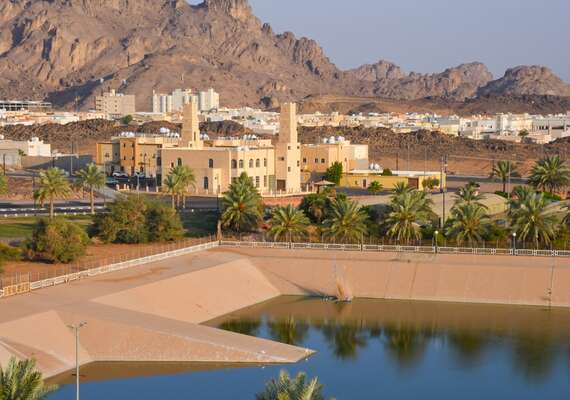
The Hail Region in north-central Saudi Arabia, a UNESCO World Heritage Site, is world-famous for its prehistoric rock art. Its two main sites, Jubbah and Shuwaymis, contain some of the world's most important and well-preserved petroglyphs, providing insights into the lives of people who inhabited the Arabian Peninsula over 10,000 years ago.
Preservation:
Despite its abandonment in the 5th century, the archaeological remains have been well-preserved due to the harsh desert environment. The site is protected under Saudi law, with management efforts coordinated between cultural and wildlife conservation agencies. This historical site serves as a valuable record of ancient human interaction with the environment and other civilisations through trade, religion, and military activities.
Must-See Experiences
- Jubbah: Wander through this ancient lakebed site, where carvings of humans and animals illustrate life in prehistoric Arabia.
- Shuwaymis: Discover the stunning depictions of hunting scenes and oversized human figures carved into the desert rock formations.
Geographic note:
The Hail Region is approximately 600 kilometres from Riyadh and can be reached via Hail Regional Airport, which offers direct flights from several major cities in Saudi Arabia. The rock art sites are located in remote desert areas, making them ideal for adventurous travellers looking to connect with Saudi Arabia’s ancient past.
Usefull Links
© ZamZam Cars. All Rights Reserved.





